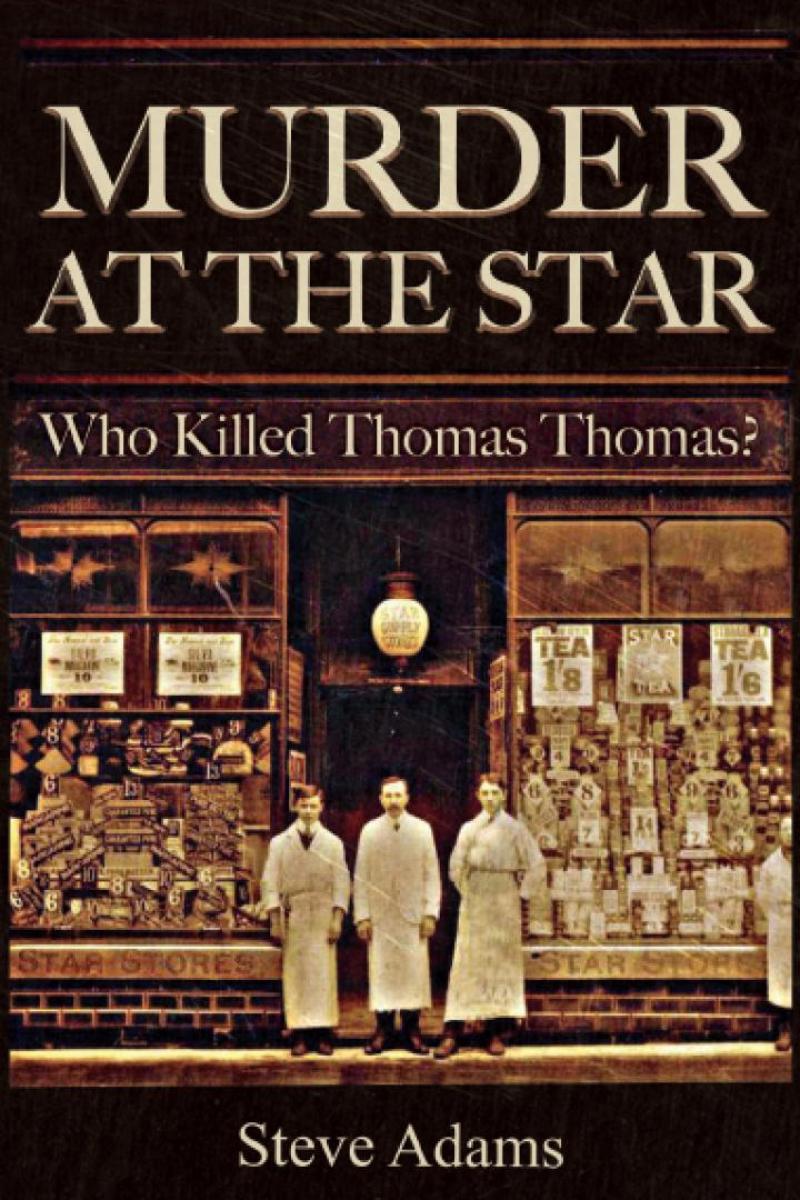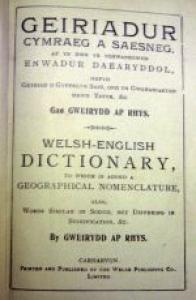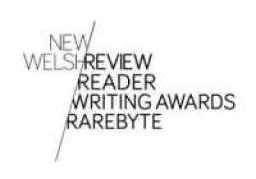Americymru: Hi Nial and Cass and many thanks for agreeing to be interviewed by AmeriCymru. Please tell us more about your new album 'Oes i Oes'?
Nial – Thanks for asking us! Oes i Oes was originally going to be an album with a children’s focus – we were both inspired by the David Grisman and Jerry Garcia album “Not just for Kids” (I’m sure some readers will be familiar with this recording, and if not, I unreservedly recommend it!) This was the idea of a grown up album using material that was originally children’s. And that still might appeal to kids. So some of the songs are children’s songs or hwiangerddi – lullabies, nursery rhymes, and some other lyrics are semi nonsense and are from penillion, which is a traditional body of verses sung either to any tune that would fit, or used for Cerdd Dant. Some I remember singing at school. And though at pains to retain the traditional feel, we’ve sometimes been quite cavalier in our treatment, putting lyrics to different melodies and vice versa and even writing new music or lyrics if we thought it would be successful. It progressed from the original concept to some extent, but hopefully still retains a sense of the childlike.
Americymru: Care to tell us something about your musical backgrounds? What bands have you played in in the past?
Cass - I grew up in a family where singing and playing together was normal and learned tunes by ear as well as having classical violin, viola and piano lessons. Viola was my main instrument until I got a repetitive strain injury from playing it! Then I got interested in folk music at university and picked up the folk idiom on fiddle. I ended up researching Welsh folk music for a PhD and learned to play the crwth while I was at it, which is a medieval Welsh bowed instrument. First band I was in was a ceilidh band, then I joined Pigyn Clust in 1998 and Fernhill from 2000 to 2004. I released a solo album of crwth music (called 'Crwth') in 2004 and since then have mainly been playing with Nial.
Nial – Not many bands you’ll have heard of! Since the seventies I’ve played dance music – Ceilidh music and in pub sessions predominantly. Though I played in a punk band in art school I’d say I come more from the tradition than Cass does – I was taught fiddle by a traditional fiddler on Tyneside, dear J Forster Charlton, a real old boy from before the folk revival, and I played for years in his band, The Borderers. Musically I’ve always been interested in arranging, so I’ve usually had a hand in that aspect in the collaborations I’ve played in. Having played fiddle, mandolin, bass and guitar in various bands, I like to think I have an insider’s awareness of the possibilities.
Americymru: Is this your first musical collaboration? How did you come to be working together?
Nial – We’ve been playing together over a decade, and this is our second CD. Cass and I both moved into the area at around the same time. I was moving from Tyneside back to where I was brought up, and my parents lived locally. A friend of my mother’s told me about this girl who had moved in next door who played a strange instrument – crwth - in her garden. Then the girl turned up at my workshop with a problem with her fiddle and I realised who she was. I first started playing with Cass as a gun-for-hire accompanist, fairly infrequently because she was playing with Fernhill and Pigyn Clust at that time. But as we played more often, and as the material became more arranged, less extempore, we started to gig as a duo. At that time it was all instrumental, songs and singing came later.
Cass - Yes, singing is a bit more of a recent thing for me - other than in the bath, that is... I took a bit of persuading. Our duo was very convenient when I lived down the road and had very small children. I'd ring Nial to tell him the kids were down for a nap and he'd pop down for a couple of hours to practice. We had a lot of time to develop intricate arrangements, argue about chord progressions, rearrange the whole lot... that was the fun of it really. The records and gigs had to be done to justify the amount of time spent!
Americymru: Can you tell us more about the range of traditional instruments used on the album?
Nial – Well, strangely, the viola is only infrequently met in traditional music. When Cass first suggested it I needed no convincing as it’s used so effectively on one of my favourite albums of the eighties, “The Lasses Fashion” by the Scottish band Jocks Tamson’s Bairns. We used it very sparingly on “Deuawd”, our first album, too.
My guitar is steel strung, by the noted British luthier, Stefan Sobel, and is quite different in concept, constructionally and sonically from the Gibson and Martin models most luthiers follow. I notice his guitars turning up in the hands of top American players more and more frequently, most recently Darrell Scott. Where appropriate I try and play it with a hint of the harp in sound and lines.
Fiddle is THE most universal folk instrument, surely? Although the Welsh fiddle style is a broken tradition, it is thought that it was played in a lyrical and singing manner, with less decoration than, say, Irish fiddle playing. Cass often uses it as a second voice, and can sing while playing a different line. I’d need two heads to do that.
And finally, crwth is the instrument Cass is best known for. It’s a sound from another time, isn’t it? The medieval soundscape with drones and buzzes, not the clarity we seem to seek in instruments now. I think of its contribution as slabs of sound emerging with each bowstroke, the nearest any acoustic instrument comes to heavy metal guitar! But beautiful all the time in the way heavy guitar only rarely manages to be. Cass’s is a copy of a late 17 th C early 18 th C crwth in the National Library in Aberystwyth. It’s one of only a handful of surviving instruments.
Americymru: Cass...you recently edited an anthology of eighteenth century Welsh fiddle tunes, some of which appear on the album. Where can we find this book online and which tunes appeared?
Cass - Not that recently. 10 years ago now. It's called 'Alawon John Thomas' and is available from the National Library of Wales. www.llgc.org.uk and is an edition of a manuscript of tunes collected by a working fiddler called John Thomas in the mid-eighteenth century. There are over 500 tunes in the book which vary from dance tunes to song tunes to snatches of tunes by Handel - by no means all Welsh tunes. We used three tunes from the collection, 'Excuse Me', 'The Drummer' and 'The Key of the Cellar'.
Americymru: Nial....we learn from your website that you specialise in the making of 'Fine Crwths of single piece construction'. How long does it take you to make a crwth. How much could a first time buyer expect to pay for one of these superb instruments?
Nial - I trained as violinmaker back in the eighties, a proper apprenticeship, very rigorous. I became interested in crwths through contact with Cass – how could I not – and the violin background gave me the craft skills to be able to make, and make something which – hopefully - stands comparison with the highly developed violin aesthetic. They are made to sound as well as look good, though, of course. They’re a little quicker than violins - a few months - but the one piece construction (apart from the table), carved from one solid piece - does mean that as work progresses, there is all the time the worrying possibility that a slip could take out months of work! Price wise, I have to charge about two thirds of what a violin would cost, so starting at £4,000.00, $6140.00 with access to beautiful de luxe old wood extra on top of that.
Cass - Nial's crwths are the best of any I've ever seen, in look, sound and feel. Really beautiful.
Americymru: Why do you think that, historically, Welsh traditional music has been overshadowed in terms of its popularity by its Irish and Scottish counterparts?
Nial - That’s a really interesting question. I’m sure that Cass will have views on this. But…Certainly the late 18 th / early 19th century enthusiasm for Scottish country dance music and traditional melodies amongst the gentry was paralleled by Welsh music being played in the most fashionable circles in London, and enjoying the greatest praise for the beautiful quality of its melodies. But later in the 19 th century much damage was done to the tradition and a great deal was lost – when I say a great deal, I mean both music and the respect for traditional music. There were various factors at work here, but mention must be made of the enthusiastic takeup of Wesleyanism, and the doctrine that only hymns and religious music had legitimacy….bonfires of fiddles, the devils instrument, and hymns sung around the house instead of folk songs. By the time the eisteddfodau got going, much of the folk music of Wales was being forced into respectability and clinging to legitimacy only as a competitive art-music. And to a large extent that is the profile it has enjoyed on the world stage ever since. In comparison with, say, Irish traditional music, you have to remember that postwar, until the folk revival, playing Irish traditional music on a fiddle or whistle was deeply unfashionable, something sad old men did in a corner in a pub while youngsters shook their heads despairingly – but Irish music in the end prevailed, so, optimistically, maybe the Welsh revival is still to come. Certainly the media, broadcasting and the like do few favours for Welsh traditional music, and compare very unfavourably with what my VHF tuner receives over the water from Ireland ….both Radio na Gaeltacht and Clare FM play predominantly Irish traditional music for much of their output. Despite being a music station, Radio Cymru has only one program per week playing Welsh acoustic music, but only some of which is traditional, Radio Wales has the folk programme Celtic Heartbeat which, as the title suggests, does not play exclusively Welsh folk music. And it isn't even on the radar for television.
You then have a catch 22 situation whereby because there is no platform for Welsh traditional music, there is no exposure to it and the general populace are unaware of it, they do not demand it, and crucially, provide no market for it.
A broken circle.
So musicians in Wales either play what puts bread on the table – Radio Cymru’s rock output, much of which is unoriginal and derivative, but pays, or a select few play Welsh folk music for their own amusement in the corner of pubs. And good for them. Fewer still forge some sort of career out of it.
Outside Wales, folk enthusiasts are largely unaware of Welsh songs and tunes, and if pressed, might typify what they thought of as Welsh folk music as being “The Ash Grove” sung by a classically trained voice to sophisticated but unsympathetic harp accompaniment, a la the Eisteddfod. No matter how skilfully done, this sort of thing is not going to convert the unconverted…I’m not anti Eisteddfodau, by the way – I’ve attended and enjoyed many, from my kids school ones to the National Eisteddfod. They have great atmosphere and spectacle (especially the school one  ). Just that I think in the long term their contribution to the tradition and traditional music has not been a positive one.
). Just that I think in the long term their contribution to the tradition and traditional music has not been a positive one.
Before closing though, I WILL emphasise the positive; exploring this overlooked area, overlooked for whatever reasons, means discovering neglected gems… and a heads up and respect for CLERA, the Society for the Traditional Instruments of Wales, who are doing as much as they can, with support for music and workshops. And as Cass says, let us not forget the progress of the last couple of decades.
Cass - I think Welsh music is definitely on the up at the moment in terms of public profile, thanks to CLERA, trac and a whole lot of bands that have been playing away largely unnnoticed for the last 40 years! I would say though, that the true measure of the health of a tradition is not how many bands and CDs are out there and how many people are aware of them. The true measure is how many people are actually playing and singing Welsh folk music for pleasure and passing them on to other people. That's the important thing and the child learning a song at school is as much a part of the tradition as the pub session or the band on stage. In fact, more so. There are certainly a lot more people playing Welsh music now than when I first got interested, nearly 20 years ago. It's always been an underground thing and I should think it always will be. I'm more concerned that it's passed on as community music within Wales than that people outside Wales know about it or that bands make a living.
Americymru: Any plans for live appearances?
Nial – Sadly no. This CD is sort of our swan-song, and it’s unlikely that we’ll be gigging it, or making another. Not from a Pink Floyd style acrimonious split – good e-copy though that would be! – but because Cass has some very good reasons, which I’m sure she’ll tell you about, and because for myself, I think that we’ve taken our collaboration as far as it’s going to progress. There’s also a distance problem now with rehearsal – we used to live only a couple of miles apart, now it would be a long car journey. And also, I kind of like the thought of going out on a high too. Think television comedy shows….by the time they’re on their eighth series, they are SO safe, formulaic, predictable…then you watch the rerun of the first series and realise how inspired and risky it was…once. Cease after the second series…it should be the law!
Cass - I''m taking a break from performing for the foreseeable future. I'm heading more in a spiritual than musical direction at the moment and putting my energies into church life. The reason I moved was that I felt called to the area we now live in, to support Christian youthwork and children's work. I'm in the process of working out where that call is going to lead me in the longer term! I think we've both moved on really.
Americymru: Where can people go to buy Oes i Oes online?
Nial – It’s a self produced and financed release, selling through Bandcamp, here Oes i Oes
Americymru: What's next for Cass Meurig and Nial Cain?
Nial - I’ll be playing fiddle for twmpaths ( Welsh ceilidh dances) with my band Aderyn Prin. I do so really enjoy playing for dancing. And the band’s pretty busy, which is good. Also I’ve been doing some gigs with my 15 year old son, Danny. He’s a great fiddle player. We’re “The Artists Formerly Known as Danny and His Dad”.
Cass - Musically, I'm writing hymns at the moment, metrical settings of Scripture to folk tunes. I'm also interested in storytelling, particularly Bible storytelling for children - I've trained in the Godly Play method which I like a lot. That takes up a fair bit of my time. I'm also appearing as a guest musician playing crwth and fiddle with Cerys Matthews in the opening night of WOMEX in Cardiff in October - but that's a way off! Not planning to do any other gigs at the moment.
Americymru: Any final message for our readers?
Nial – How about some musical recommendations? I don’t think Google and Amazon have Welsh folk music predictive advertising nailed as yet. So, here goes….People who liked Oes i Oes might also like Perllan , or anything else by the band Pigyn Clust, might like Cerdd Cegin’s recent release Medlar Pear , might like Dore by Bob Delyn, might like Fernhill’s Canu Rhydd , other Fernhill releases or anything else Ceri Rhys Mathews, Julie Murphy or the other Ferhill members are involved in. For a player wanting to learn some traditional Welsh music, Y Glerorfa’s Yn Fyw live recording is a great listen and has many excellent Welsh tunes, appealingly arranged and played. Readers might like our first album too – Deuawd .
Cass - And my solo album Crwth . Assuming your readers are listeners of taste and discernment? That's all. Enjoy!
Nial – Hwyl!
Interview by Ceri Shaw Email



 ). Just that I think in the long term their contribution to the tradition and traditional music has not been a positive one.
). Just that I think in the long term their contribution to the tradition and traditional music has not been a positive one.





 Geiriaduron/Dictionaries
Geiriaduron/Dictionaries








